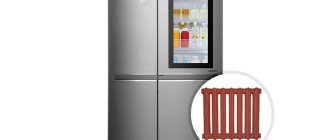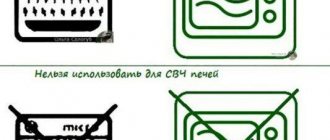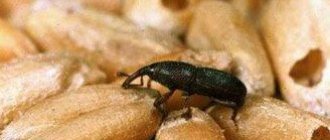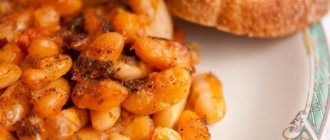Whether hot foods or liquids can be placed in the refrigerator directly depends on the freezing technology used by the particular household appliance. However, experts strongly do not recommend cooling pots just removed from the stove or water for drinking in the refrigerator in any case. At worst, this can result in product failure and expensive repairs.
It would seem that the refrigerator serves precisely to cool food; what harm can hot dishes cause to it? In fact, household refrigeration appliances are ideal for long-term storage of perishable food, the temperature of which is approximately equal to room temperature before placing it inside; for all other tasks they are of little use.
Today there are two freezing technologies - standard drip or “crying”, when the temperature in the chamber decreases through a cooler - liquid circulates in the back wall of the refrigerator, taking heat from the chamber, and the more modern and youthful “No Frost”. We’ll talk about the latter in more detail below, but for now let’s focus on its drip analogue.
Hot things don't belong in the refrigerator
Refrigeration equipment is intended:
- to preserve the freshness of chilled finished products at low temperatures,
- freezing chilled foods and semi-finished products in the freezer,
- cooling drinks at room temperature to lower temperatures,
- storage of vegetables and fruits.
The refrigerator is a device that operates on the principle of short-term activation. Low temperatures are maintained in the chamber thanks to a special device called a compressor.
It pumps coolant – refrigerant – through special tubes.
The set temperature is maintained automatically within a certain interval: as soon as the temperature begins to rise, the compressor automatically turns on and brings the temperature regime into compliance in a short time.
Damage
Modern cooling equipment has glass shelves edged with plastic. The walls inside the chamber are also made of plastic.
- When uncooled food is placed on a shelf made of glass, a crack is most likely to appear on the glass surface due to temperature changes.
- If hot dishes come into contact with plastic surfaces, there is a high risk of deformation of the walls. This problem is most pressing for budget-class equipment with less heat-resistant manufacturing materials.
Both cases may entail removal of the unit from the warranty and the need for repairs at your own expense.
What are the dangers of hot food in the refrigerator?
If you place a hot pan in the refrigerator compartment, the temperature in the chamber will rise sharply and the compressor will have to work continuously for a long time..
This is dangerous for the device; it may automatically turn off due to overheating. Several such experiments can lead to breakdown of the unit and failure of the entire system.
It must be remembered that the motor of household appliances cannot be operated for a long time under load; the motor must rest.
Also, placing warm food in the refrigerator leads to an increase in electricity consumption and voltage surges in the home network, which can damage other electrical appliances.
Be sure to read:
How to defrost a No Frost refrigerator, how often, how long does it take to defrost the refrigerator?
A hot pot or pan can damage and melt the plastic racks or pockets of the refrigerator door; a glass shelf can burst under heated dishes due to temperature differences.
A little physics
The principle of operation of a refrigerator is as follows - it does not produce cold, but takes away heat. That is, by cooling the internal space, it takes away its thermal energy. And it transmits it through the radiator on the rear wall.
If you put warm or hot food in the refrigerator, the amount of heat in the refrigerator increases dramatically. Accordingly, it needs to be taken out of the chamber and moved outside. And this increases the load on him.
Whether you can put hot food in the refrigerator depends on the situation. If it is necessary, then yes. But putting hot food in the refrigerator means harming not only it. We will talk about this below. Read carefully and do not make mistakes !
What happens if you put hot food in the refrigerator?
The refrigerator itself can suffer significant damage, including complete damage.
When a heated object is placed in a refrigerating chamber, the vapors released turn into ice crystals, condensation begins to settle on the walls of the unit and a layer of ice quickly forms. Ice quickly covers the evaporator opening.
Thus, the ice layer, which has low thermal conductivity, prevents correct temperature measurements and distorts sensor readings, which leads to malfunctions of refrigeration equipment.
The temperature inside the chamber begins to rise or fall. This will lead to freezing of food placed in the chamber, or, conversely, to accelerated spoilage if the temperature in the chamber is higher than normal.
Important rule! Only food that is no higher than room temperature can be placed in the refrigerator. The freezer compartment can be used to place frozen food (for storage) or chilled food (for freezing and subsequent storage).
Spoiled food
The question of the quality of the products themselves, placed in the refrigerator hot, is controversial. Powerful equipment will cope with the problem without spoiling the food, but with a unit with low technical characteristics, the food will most likely at least acquire an unpleasant foreign odor.
- Hot food products release heat quickly, and low-power equipment does not have time to cool quickly.
- In this case, warm air is transferred to other food. When there is a lot of food products, the problem will not manifest itself much, the increase in degree will not be so significant, no more than 2.
- And in a half-empty refrigerator compartment, where there are few other dishes, the temperature increase of each will be more significant, they will become “hotter” by 5-10 degrees. In this case, there is a high risk of their damage.
Soups and other foods that are placed in the chamber without preliminary natural cooling lose their taste. This is most relevant for powerful equipment and models with fast freezing.
Also, do not forget about plastic utensils that are not intended for food. Some types of plastic emit harmful substances that have a negative effect on the taste of food and on the human body.
We cool food quickly and correctly
Every housewife needs to be able to properly and quickly cool heated food if there is a need to place food that has not yet cooled down in the refrigerator.
Several simple methods will allow you to quickly cool any dish and keep your household appliances working:
- Fresh milk can be quickly cooled directly in the jar by sealing it with a lid and placing it under running cold water for a few minutes. After this, you can safely put it in the refrigerator and be sure that it will not spoil or acquire a musty smell. This way you can cool compote or any other warm drink.
- In winter, freshly prepared soup can easily be cooled on a balcony or loggia, as well as on a windowsill under an open window. Cold air will quickly lower the temperature of dishes and food. Just remember to put a stand under the hot dish. This is especially true if the window sill is plastic.
- In summer, the fastest cooling will be if the pan is placed in a shallow bowl of cold water. To speed up the process, you can add an additional stream of cold water into the basin, which will displace the warmed water and thereby speed up the cooling.
- You can throw a folded towel moistened with cold water over a warm dish.
- In some apartments in the kitchen there is a niche-cabinet under the window, where in winter a container with a hot dish is placed for quick cooling.
- Frying pans and roasting pans are made of thick-walled metal and keep food warm for a long time. At the end of cooking, it is recommended to place the finished product in a thin-walled pan, and the cooling process will be noticeably accelerated.
Advice! You don’t have to cool the dish, but, on the contrary, place it hot in a thermal container, thermos or thermal bag. Then it will remain warm until the owners return, and there will be no need to reheat it.
Electricity
All cooling units have built-in sensors to monitor temperature conditions. The device influences the intensive operation and switching time of the compressor.
The temperature inside the chamber rises sharply when uncooled food is placed in it. The sensor reacts to changes, household appliances work in a more intensive mode.
The compressor of a conventional refrigerator switches on to continuous operation, while inverter technology increases the speed. All this increases energy consumption.
- Example situation. A 3-liter pot of uncooled soup is placed on the refrigerator shelf.
- The food is hot, the temperature is +90 degrees.
- In order to cool the dishes and soup to +5 degrees, it is necessary to “drive” out thermal energy in the amount of 255 kilocalories (0.296 kW).
The COP coefficient on average ranges from 3 to 4 units. That is, the household appliance will have to consume an extra 74-100 watts.
At first glance, such an amount is not overly wasteful, but if you constantly refrigerate the food, the amount will be noticeable. Moreover, excessive consumption of thermal energy is not the only problem from hot food.
Reviews
Anna
Several times in a row it was necessary to quickly reduce the temperature of the dish. I put the pan in the refrigerator without covering it with a lid. Of course, the result pleased me, but the door began to close much worse, the sealing rubber began to let the cold in. As a result, I called a repairman to fix the problem, and the repair cost me more than a couple of chilled soups. I don't experiment like that anymore.
Irina
I periodically put hot foods in the refrigerator. This did not affect his work, but he was unpleasantly surprised by the electricity bill. The load has increased greatly and so has the light consumption. Now I first cool the dishes to room temperature in a container with ice or wrap them in a damp, cold towel.











